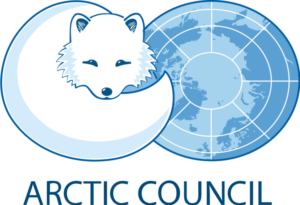- The European Union announced, in early 2023, that will work so that its own satellite constellation, IRIS², is in fully operation by 2027;
- The prominent role of Starlink satellites in the Ukraine war seems to have accelerated European plans;
- In addition to bringing internet connections to remote areas, European satellites will serve other public and security purposes.
With the idea of bringing a fast and efficient internet signal to the entire planet, even in difficult to access and remote areas – such as rural areas, the first group of 60 Starlink communication satellites was launched in 2019 by SpaceX, the space transport company founded by Elon Musk.
In January 2023, another 51 satellites were launched for this constellation, which according to Chris Hall, director of the technology website Pocket Link, could be among 10 or 12 thousand satellites already launched so far.
Unlike other satellites, SpaceX’s constellation has its orbit much closer to Earth, staying at an altitude of about 550 kilometers and therefore its communication speed with ground devices is shorter, reaching 20 milliseconds.
Regardless of the controversies of astronomers, who claim that the number of satellites so close to the planet can make it difficult to observe asteroids, the technology and its success in the war in Ukraine still seems to have inspired the European government for other reasons, which released its new proposal for create the European Union’s own satellite network.

The proposal to launch a new European satellite constellation for communication and internet connection
Europe announced, in early 2023, that it will launch its own space satellites aimed at expanding connectivity and digital communication of its citizens, inspired by Elon Musk’s Starlink. The set of satellites was named the IRIS² Satellite Constellation.
Previously, the European Union already had its satellite constellations, such as Galileo, which is used for navigation systems like the American GPS, and Copernicus, for observing the planet Earth.
Internal Market Commissioner Thierry Breton was the one who first proposed the idea and the initial public budget for funding the creation of these satellites will be 2.4 billion euros, in addition to more than 642 million euros provided by the European Space Agency. That is, more than 3 billion euros in total.
According to the project disclosure document, launched by the European Union itself, in addition to the ability to bring broadband internet to all of Europe and Africa, IRIS² also:
- It will be able to create synergies with the other existing satellite constellations – Galileo and Copernicus – so that there is no “congestion” of space;
- It will be focused on government services and have defense applications for the government with its ability to track other satellites and spy balloons, surveil borders and manage humanitarian crises;
- It will encourage European startups, which will build around 30% of the project’s infrastructure;
- It will increase cohesion between the territories of the Member States of the European Union, as they will be increasingly connected, in addition to helping in social and economic development;
- It will feature a quantum encryption system for security, a first for satellites of its kind, in the long term ensuring that satellite communication becomes more reliable, cost-effective and secure on a global scale.
The same document also reinforces the need to seek digital sovereignty in a context where economic and security concerns are growing, along with cyber threats and this makes them increasingly depend on a fast and resilient connection.
The initial services of IRIS² are expected to start in 2024 and the European Union expects that in just three years, already in 2027, the satellites will be at their full operating capacity. A short time for the project to quickly become one of the strategic points of security, resilience and protection of the continent.
How the war in Ukraine accelerated European plans to increase its sovereignty over satellite communications with its own satellite constellation
With such a high investment, it is a fact that the European Union needed incentives to notice the benefit and effectiveness of satellite constellations.
After Russia’s invasion of Ukraine and pressure from Ukrainian minister Mykhailo Federov for Elon Musk to provide Starlink services in the attacked territory, SpaceX sent the necessary equipment so that the satellites could come into use there.
The Starlinks proved to be valuable, especially in a conflict environment, because the more of them in orbit, the more complex it is for a possible enemy to cut off their communication, since it would be necessary to destroy thousands of mini satellites for that to happen and the budget for an operation that level would be too high.
Even if there are submarine cables connecting the world and they are essential for the transmission of information, this is an old technology and its weaknesses are physical, due to accidents that may occasionally occur, such as earthquakes, fishing accidents or commercial transport, and digital weaknesses , with the possibility of them being stapled.
In this way, the weaknesses of submarine cables reinforce the strengths of Starlink satellites.
Furthermore, drones are increasingly entering warfare at all military levels, from their use at the squadron level to brigades and divisions. Drones can be used for reconnaissance and even direct attack. However, for their use, they need to be connected to satellites (in the case of large military drones) or to the internet (in the case of commercial drones that are also being used in conflicts). So, how not to lose this connection in a territory at war?
Through satellites that promise to offer connection even in the most remote areas.
Also, any country wants to gain sovereignty in all aspects so as not to be dependent on other countries, as geopolitical relations can change in an instant. Europe shows that it does not want to depend on a North American private company, quite the contrary, IRIS²’s plans reinforce their intention to become independent in this field.
This whole context may have been one of the main motivators for the acceleration of the European Union’s plan to create its own constellation of satellites for communication.
The importance of public and private satellite constellations in communication and access to the global internet
As mentioned, satellite constellations manage to bring quality internet connections even to the most remote areas, being very important to connect places that are difficult to access in the network that increasingly plays a leading role in our daily lives and a valuable alternative to the networks of cable and cell towers.
What’s more, these satellites can also provide communication services in emergency situations such as natural disasters, provide information for navigation services such as GPS, and broadcast TV and radio signals around the world.
Whether by public initiative, such as IRIS², which even with a small private incentive is still mostly governmental, or by private initiative, with the Starlink system, it is a fact that these satellite systems will play an essential role in the future for world communication, whether in commercial level as well as the military/government level.Learn how Starlink’s use in the Ukraine war may have accelerated Europe’s plans to create its own satellite constellation, IRIS².


















[…] Talita (2023) The EU will launch its own satellites constellation for Communication and Internet – IRIS², the “European Starlink” [online] Disponível em: The EU Will Launch Its Own Satellites Constellation for Communication and Internet – IRIS², t… […]